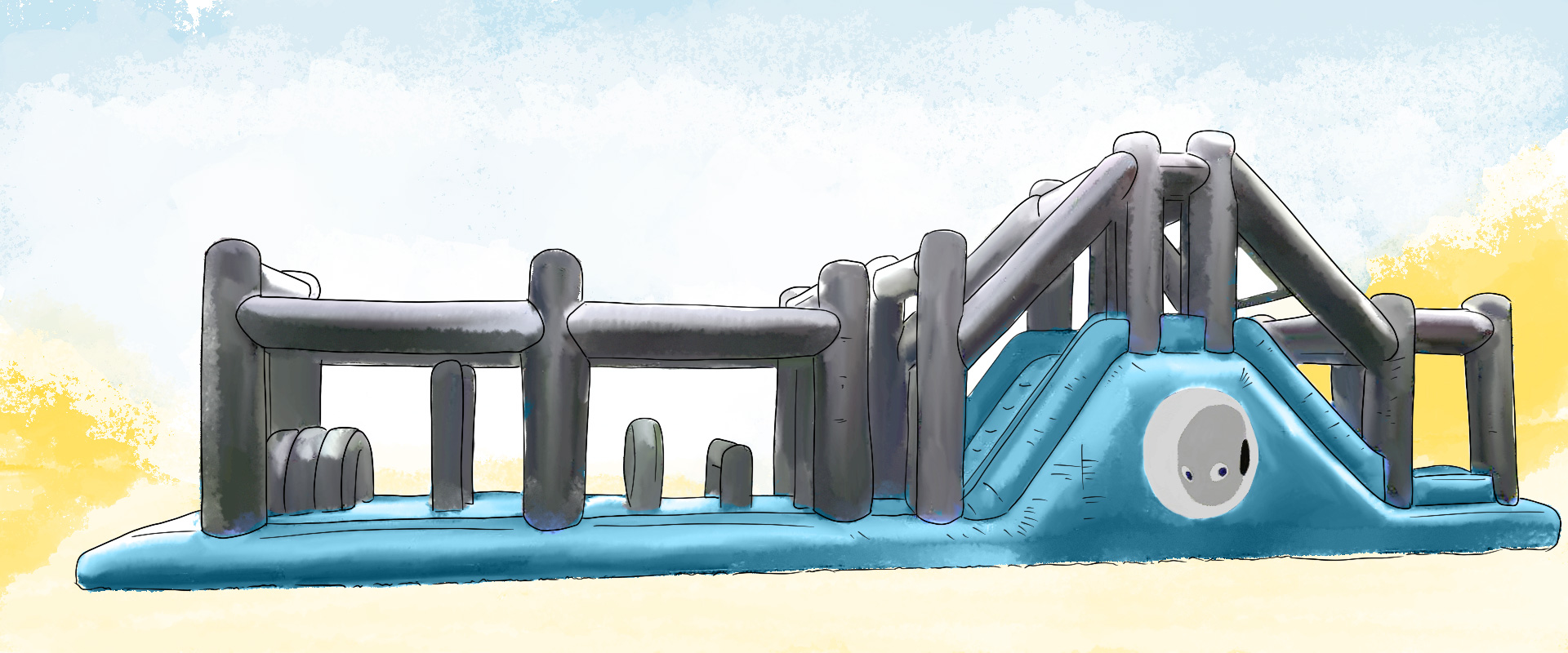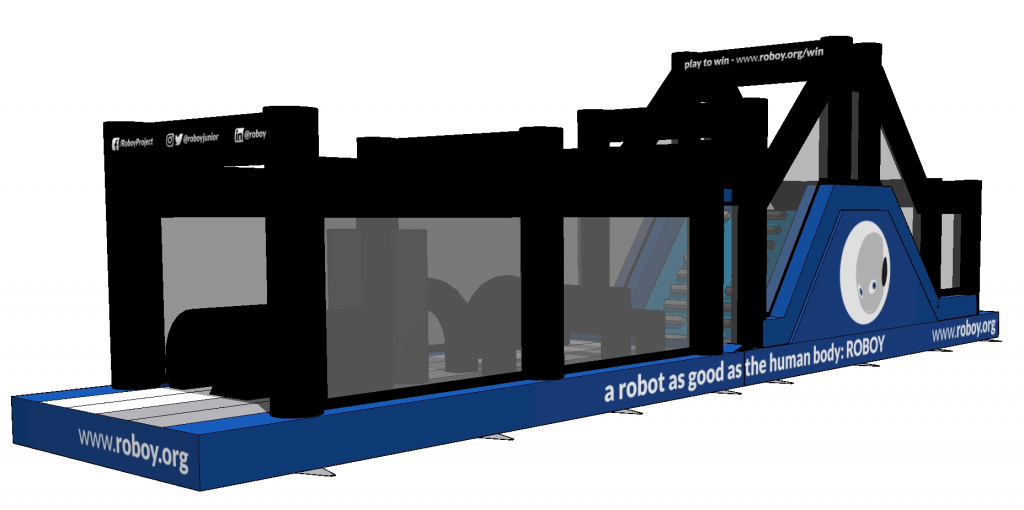The ROBODY PARKOUR Challenge
Vision
Beat the fastest human on an inflatable parkour race track with a robot.
Approach
- Establish base-line
- Start with a minimally solvable solution (any robot, in simulation, hard track)
- Make harder (legged robots, real track, soft track)
- Repeat until vision achieved.
An ambitious Goal
We all dream of having more time: time to spend traveling and exploring, time to read and learn, time to teach our children and have our children teach us, and we dream of time out – from the mundane, boring tasks that prevent us from becoming who we are truly meant to be as human. The task of robotics is to enable all of this to be possible, but progress in robotics is slow – robots remain expensive and one promising robot startup after the next dies simply because the best we can build does not provide enough value – robots are just not capable enough. Or too slow… so how about making robots more daring?
We believe that just as humans, robots grow with the challenge they’re facing – so it’s time for a new challenge. A challenge in the spirit of embodied intelligence, one that we humans easily cope with, but robots fail – and static stability is not an option:
The Robody Parkour Challenge
Approaching a vision with a challenge
Anatomy of a good robotics challenge
Requirements
Solution
Challenge structure
The challenge has been put on hold indefinitely due to the ongoing COVID-19 pandemic.
BASELINE ESTABLISHMENT – SINCE 7.9.2019
Collecting video, timing and motion tracking data to establish a human baseline performance and create a data set of dynamic interaction with the race track, with the additional goal to understand different strategies used by participants to tackle the obstacles, to sequence between obstacles and their short- and long-horizon motion/path planning.
Simulation Challenge
[wp-3dtvl model_file=”/RoboyParkourChallengeTrack-Simplistic-2019-09-19.stl”][/wp-3dtvl]
Given the 3D model of the track, build a simulated robot that gets through the track fastest.
The “robots” in this simulation challenge comprise of an arbitrary combination of rigid shapes, with arbitrary geometry, connected by rotary or ball-in-socket joints.
The robot and the simulation needs to satisfy to constraints on the right.
Scoring: The summed time of the best 8 out of 10 runs. Runs where the robot falls off the track are counted as equivalent to the slowest run + 10s per run.

Resources
PHYSICAL CHALLENGE
buting to this challenge, please reach out at win@devanthro.com – we estimate an earliest possible start of the challenge in Q3/2022.
FAQs
Live events
7.9.2019 – Roboy Finals
19. + 20.9.2019 – IEEE Conference of Cyborgs & Bionic Systems, Munich
During the IEEE Conference of Cyborgs and Bionic Systems, we officially announced the competition to the public.
Scientific Advisory Board
The board will be announced eventually.
Interested to shape this collaboration from a science perspective to help us achieve the goal? Write to parkour@devanthro.com we’ll be happy to have you involved!


